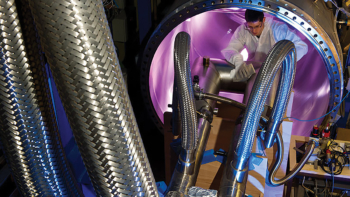 Read article 'ALEPH coil hits the road'
Read article 'ALEPH coil hits the road'
 Read article 'ALEPH coil hits the road'
Read article 'ALEPH coil hits the road'
Magnet technology has driven progress in detectors and accelerators for more than half a century. Situated inside detectors, large solenoids allow physicists to determine the charge and momentum of particles with high accuracy. For accelerators, magnets provide the fields that keep charged particles on circular trajectories. The advent of superconducting accelerator magnets in the 1970s led to a jump in the energy and performance of colliders, culminating with the LHC. But going to higher energies demands next-generation conductors such as niobium tin or even more advanced high-temperature superconductors. As our special foreword on accelerating magnet technology describes, CERN and other institutes worldwide are making important progress towards these technologies, and the magnets for the high-luminosity LHC provide a springboard to future colliders.
All of the articles from the print edition of the retrospective are available online or alternatively you can download a PDF version.
 Read about 'In focus: vacuum technology'
Read about 'In focus: vacuum technology'
Innovation in vacuum science, technology and engineering at CERN and beyond